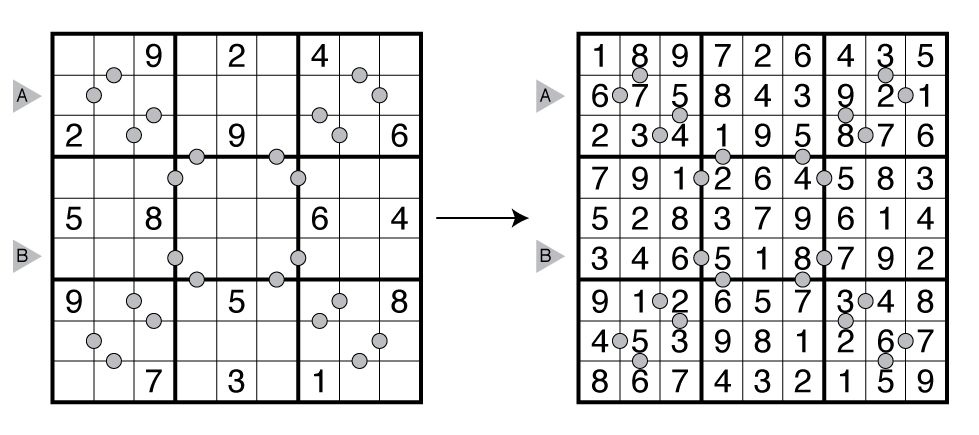Consecutive Pairs Sudoku R&I

Rules: Standard Sudoku rules (insert a number in the indicated range into each cell so that no number repeats in any row, column, or bold region). Also, if a gray circle is given between two adjacent cells, then the two numbers in those cells must be consecutive. (Note: not all gray circles are given; adjacent cells without a circle may contain either consecutive numbers or nonconsecutive numbers.)
Answer String: Enter the row/column marked “A”, followed by a comma, followed by the row/column marked “B”. Rows are entered from left to right and columns from top to bottom. This example has the key “675843921,346518792”.
(Brief) History of Consecutive Pairs Sudoku: Descended from Sudoku. This variation is a simplification of the related Consecutive Sudoku which includes an “if and only if” rule on the Consecutive cells being marked. Our implementation of Consecutive Pairs Sudoku, and the switch to this style as our default, came from active discussion between Tom Collyer and Thomas Snyder.
History of this example: This Consecutive Pairs Sudoku “Big X” was written by Thomas Snyder for our Grandmaster Puzzles blog post on 9/29/2020.
Sources for Consecutive Pairs Sudoku: Follow this link for Consecutive Pairs Sudoku puzzles on this website. If you are new to this puzzle type, here are our easiest Consecutive Pairs Sudoku to get started on. More Consecutive Pairs Sudoku puzzles can be found in The Art of Sudoku 2 and in Masterpiece Sudoku Mix 6: Consecutive Pairs Sudoku.
Design rules for contributors: A Grandmaster Consecutive Pairs Sudoku will have a unique solution that can be reached by logic alone. Generally, a Grandmaster Consecutive Pairs Sudoku has a symmetric layout of numbers and a symmetric or thematic layout of marked consecutive pairs dots in the grid.
